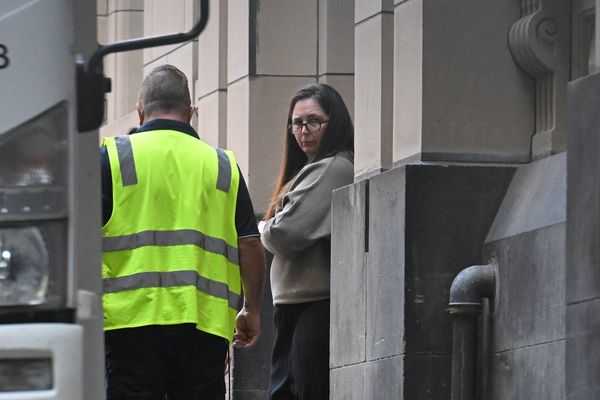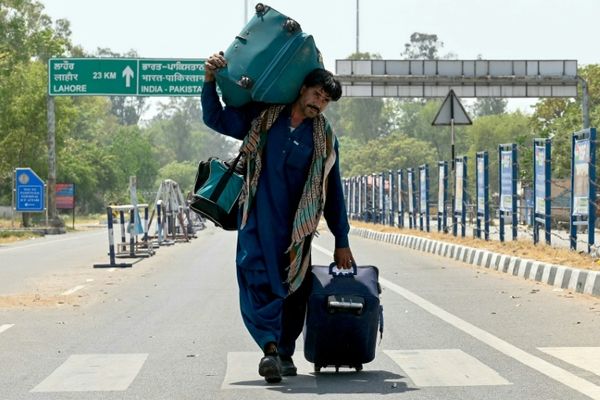
Briana* was just starting to get a handle on the unpredictability of feeding, bottles and all that comes with a newborn when she received an email informing her she had lost custody of her three-month-old son.
Days later, child protection authorities took her child. With him, they took many of the milestones the 36-year-old first-time mother was looking forward to. “I’m going to miss those first words, the first rollover, everything,” she says.
“They’re going to stop me from that first-time normal experience. You go from being a mum … to completely nothing.”
Briana is one of 33 Aboriginal parents who spoke to researchers from Human Rights Watch about their experiences with the child protection system in Western Australia. Between them, these parents had 113 children removed.
Briana was homeless when her son Mica* was taken. A victim of domestic violence, she had been living in a women’s shelter but was evicted after a dispute with a staff member.
“They never had an issue with my parenting until I didn’t have a roof over my head,” she says. “Just because someone’s homeless we shouldn’t be taking the child off them. You should be offering them more help if anything.”
Human Rights Watch and the National Suicide Prevention and Trauma Recovery Project interviewed 54 people over two years to produce the report released on Thursday, titled All I Know is I Want Them Home. They included parents, grandparents, children currently in care and young adults who had grown up in care.
Western Australia has the highest rate of Indigenous child removals in the country, with Aboriginal children making up more than 60% of all children in care.
The number of Indigenous children in care in WA increased more than 400% in 20 years, the report said. In 2003, 570 Aboriginal children were in out-of-home care, making up 35% of the total children in care. By 2023 there were 3,068 Aboriginal children in out-of-home care and the proportion of children in out-of-home care who were Indigenous had almost doubled.
Some Aboriginal mothers had children removed after they sought treatment for injuries caused by a violent partner. Many said they were scared to seek help for fear their children would be taken away.
“Because of the assaults from … the father of [my son], I went to the hospital and then the hospital got involved in and called [the Department of Communities],” Chloe* whose five-year-old son was removed, says.
“Because my baby … was with me at the time when I went to hospital and then they came in and took [my son].”
Another woman says: “I had a black eye and a split lip and I didn’t want to open the door because I knew something was going to happen. They just said, ‘Well, we’re just going to ring the police so we can come in for a welfare check,’ and that’s how they took them.”
Rose*, who was removed from her mother as a child, says: “[I didn’t go to hospital] a couple of times because they would get involved … and then they would try and make me look like I’m the crazy person, like they always do to people, like they done to my mum. So, I thought I’m not going to let them do it to me. No ways.”
The report found the most common reason for a child protection notification was because of exposure to domestic and family violence. Other triggers include homelessness, incarceration, food insecurity or allegations the parent had been physically abusive to the child.
Noongar woman and National Suicide Prevention and Trauma Recovery Project support coordinator Marianne Headland Mackay says insecure housing and poverty is contributing to the jump in child protection notifications and furthering trauma for Indigenous families.
“Aboriginal families are struggling with unstable accommodation, yet a secure home – one of the most fundamental needs for a child to thrive – is denied to them,” she tells Guardian Australia.
“Instead of offering support to struggling families, the government’s approach is to remove children, causing more damage and deepening the wounds in our communities.”
HRW researcher Annabel Hennessy said their work found that poverty and a lack of support compounded families’ stress and contributed to intergenerational trauma. Many who had children removed had themselves been removed, either through the child protection system or stolen generations-era policies.
“Homelessness is a symptom of poverty. That’s a state failure, not an individual failure,” Hennessy says.
She says the lack of support for victims of domestic violence who were seeking housing was “quite shocking”.
She said many families were without any legal representation and had to represent themselves in court, “We’ve got limited statistics from the children’s court but from most of the cases that went to trial last year the majority of parents did not have legal representation,” Hennessy says.
“Going to a court in a situation where your child can be removed from [you] and you also might be experiencing domestic violence and homelessness – the power imbalance between yourself and the government department is huge.”
The report recommended establishing an independent commissioner to oversee Aboriginal children in care and better social and legal support for families.
* Names have been changed
• In Australia, the crisis support service Lifeline is 13 11 14. The national family violence counselling service is on 1800 737 732. Children, young adults, parents and teachers can contact the Kids Helpline on 1800 55 1800. Help for Aboriginal and Torres Strait Islander people is available on 13YARN on 13 92 76.







